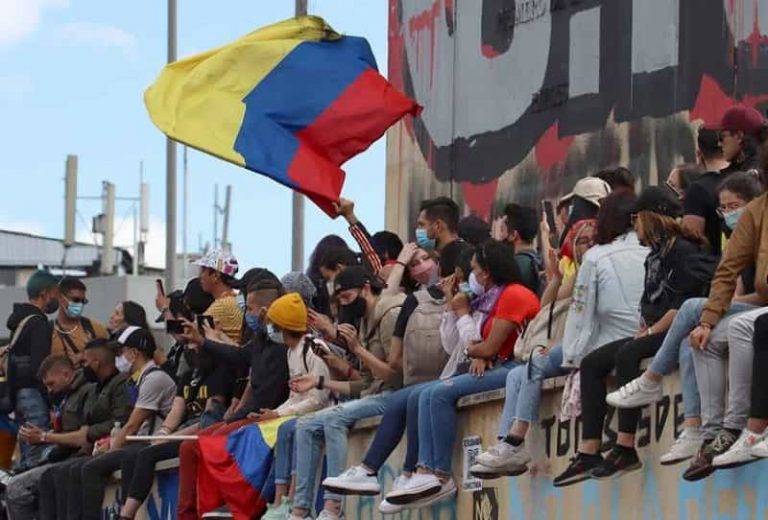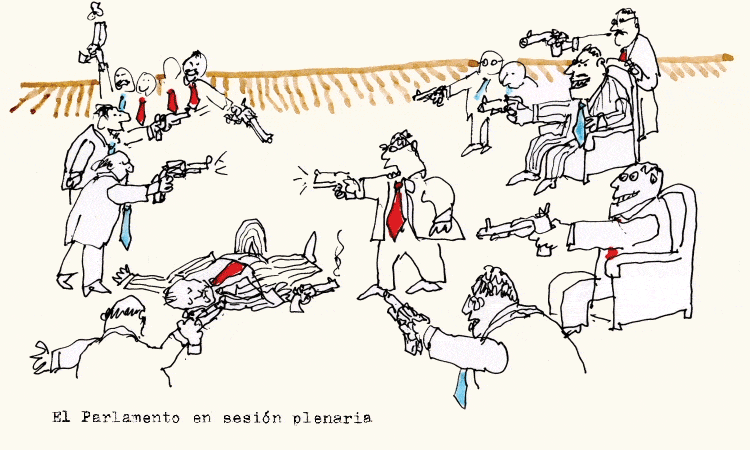In Furrows of Sorrows, Colombian History Pt. 6
Justin Hauver
This is the sixth part of a series on Colombian history written to help me make sense of the country’s past. Education research (all research?) depends on an awareness of context, including historical context. Besides, I was curious and I like reading about history.
The chorus to the Colombian national anthem includes the lines:
En surcos de dolores, (In furrows of sorrows,)
el bien germina ya. (goodness now grows.)
President Rafael Núñez wrote the hymn and had a friend compose music for it. Núñez was a participant in the violent struggles for power that characterized the Colombian nineteenth century. Eventually he led the the right-wing takeover in the 1880s that culminated in the Constitution of 1886 and ushered in 50 years of Conservative hegemony. From that historical vantage point, Núñez wrote a poem soaked in sadness and loss but also structured around hope.
I’m no fan of Núñez’s politics and I find some of the allusions and language of the national anthem objectionable (read the whole anthem here). But I live in a glass house framed by the racist history of my own country’s national anthem. And, more importantly, I think that Núñez managed to capture an essential piece of the Colombian spirit. Though written more than a century ago, el Himno Nacional de la República de Colombia is a mixture of historical despair and tempered optimism that still guides the thoughts and feelings of many Colombians that I have met. The notion of themselves as a people full of life and happiness coexists, and perhaps sustains, scathing critiques of government abuses and clear-eyed assessments of narcotraficante power.
This post picks up the storyline at Gaitán’s murder in 1948 and the chain of violence that followed it right up to the present day. It covers a period of Colombian history with deep, deep furrows shaped by bitter sorrows. And yet, throughout there have also been people willing to plant new seeds and cultivate goodness.
La Violencia
As covered in a previous post, the widespread instability and brutality known as La Violencia had a nebulous beginning sometime around 1946 when Conservatives won control of the government. Political murders then escalated in response to the murder of the popular Liberal leader, Jorge Eliécer Gaitán in 1948. That year, more than 43,000 were killed for political reasons, up from 14,000 the previous year. President Ospina Pérez tried to reach across the aisle to forge some peace with Liberals. But his efforts were thwarted by his own party’s leader, Laureano Gómez, newly returned from Franco’s fascist Spain and eager to climb the ladder of chaos (Littlefinger, Game of Thrones).
Laureano Gómez
Laureano Gómez first gained control of the Conservative Party in 1932 and immediately turned his attention to undermining the Liberal government by any means necessary. A few years later, he founded a newspaper called El Siglo to support his assaults on Liberalism. He was a “Christian fascist” who was highly sympathetic to the Axis powers during WWII and openly supported Franco’s rule of Spain throughout his life (Biblioteca Nacional de Colombia). Of course, his friendship with Franco did come in handy from time to time because Gómez’s extreme tactics, perhaps crossing into treason with his alleged role in kidnapping Liberal President Alfonso López Pumarejo in 1944, sometimes forced him into exile in Spain.
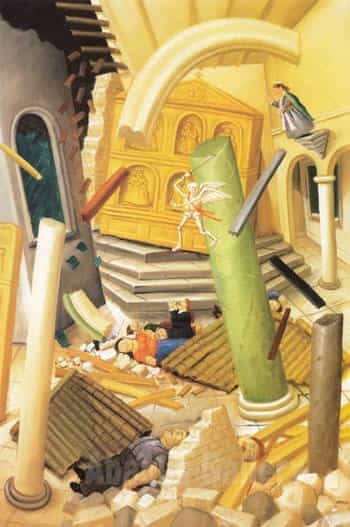
Nicknamed “el monstruo” by Liberals, Gómez’s newspaper, his restaurant, his house in Bogotá, and other sites associated with him were burned to the ground in the riots that followed Gaitán’s assassination. Failing to take the hints, hard-headed Gómez rushed back to Colombia from his latest exile in order take advantage of the troubled country. He pushed for the army to take charge and blocked attempts at reconciliation with Liberal leaders. To further his agenda, he used his platform during this sensitive time to demonize the Liberal Party, describing it as a basilisk that “walks with confused and naive feet, with legs of outrage and violence, with a huge oligarchic stomach, a chest of anger, Masonic arms, and with a small, tiny Communist head” (Biblioteca Nacional de Colombia).
Unsurprisingly, violence intensified and spread. Liberals and Conservatives even shot at each other in the middle of Congress, resulting in several injuries and two deaths (Biblioteca Nacional de Colombia). The bipartisan National Union crumbled, President Ospina Pérez declared a state of emergency, and Liberals were purged from all branches of the government, including the police who were integrated into a national force and unified under the minister of war.
Following a familiar pattern, the worst of the violence occurred in more rural areas, “In Puerto Tejada, on the Cauca River south of Cali, enraged Liberals murdered some leading Conservatives, decapitated them, and then played soccer in the main plaza with the severed heads” (Bushnell, 202). Marginalized Liberals and Conservatives developed increasingly savage ways to kill one another: the Necktie Cut, with the tongue used in place of a tie; the Monkey, with the victim holding their own severed head; and the Vase, with the victim’s limbs placed into their opened torso. Narcotraffickers would later use these same tactics in these same areas.
Gómez won the presidency in 1950 by using extreme voter repression. Claiming massive voter fraud, he preemptively burned thousands of Liberals’ IDs, preventing them from participating in the elections. He also broke up Liberal Party rallies by firing into the crowds. After an assassination attempt, the Liberals withdrew their candidate and Gómez won in a prefabricated landslide.
Despite past Nazi sympathies and current support for fascist Spain, once in power Gómez decided to align himself with the United States. And so Colombia became the only country in Latin America to send a battalion of troops to fight in the Korean War. Support from a violent Christian fascist, however, might say more about the US than it does about Gómez.
President Gómez also came just short of all out war against the Liberals. He used the national police force, informal “para-police” loyal to the Conservative Party, and intelligence agencies in order to suppress and even kill Liberal critics. Political murders surpassed 50,000 in 1950. Thousands of Liberals, unprotected and unrepresented by the official government, began to organize into dissident guerrilla forces in Tolima, los Llanos, and around Bogotá.
¡No más sangre, no más depredaciones en nombre de ningún partido!
“No more blood, no more devastation in the name of any party!” That was the rallying cry of General Gustavo Rojas Pinilla, who led a peaceful coup against Gómez in 1953. When the president tried to assert his power by dismissing the leaders of the armed forces, he was dismissed instead. Gómez fled, yet again, to Spain.
At first Rojas Pinilla was a welcomed reprieve. Seen as a bit of a non-partisan, he was able to get many of the guerrillas to demobilize by offering amnesty. Moreover, under his presidency, women gained the right to vote and there were large investments in public works projects. All in all a huge improvement from Gómez the bile-spewing Christian fascist. Rojas Pinilla did, however, have a history of supporting para-militias during La Violencia and he appointed a solidly conservative government. Still, the overall economy was humming along during his rule and he managed to build a solid base of support among working class Colombians from both parties.
Over time, Rojas Pinilla’s mild dictatorship became less mild. He censored the press, grew freer in his use of violence, and let corruption spread. But his greatest misstep might have been raising taxes on the rich. The oligarchs could tolerate political repression but not an assault on their sacred right to profit handsomely from exploitation. Business owners worked with church leaders to organize a massive general strike. Many of their employees even received paid time off. Rojas Pinilla bowed to the pressure and fled to – wait for it – Spain.
The National Front
Teaming up against Rojas Pinilla produced a lasting bond among the upper classes. They had had enough of the wild swings in the government. The instability was bad for business. A new plan for dividing government called the National Front was put forward. For 16 years, all branches of government, at all levels, would be split between Liberals and Conservatives. The parties would take turns holding the presidency, with Liberals going first.
The plan was put to national referendum and 95% of the voters, women among them for the first time, voted yes. Some measure of stability was achieved and many mark the start of the National Front as the end of La Violencia. The agreement, however, was less a moment of national healing and more of a “coalition of the old political classes, of capitalism and the Church” (Biblioteca Nacional de Colombia, my translation). Stability for the rich did not trickle down to the most vulnerable. During the years of the National Front there were 200,000 additional political murders and over a million people were displaced from their homes.
The Evolution of Guerrilla Movements
The violence and insecurity that ravaged the countryside during La Violencia persisted, albeit at much lower levels, into the 60s. In several regions, neighbors organized themselves into self-defense forces, stepping into a vacuum of state authority and protection in order to keep their families safe. Some even set up “independent republics” completely outside the control of the national government. This was nothing new. There has never been a time when all of the lands called Colombia were united under a single power (Biblioteca Nacional de Colombia). But Conservative President Guillermo León Valencia (1962-1966) decided to 1) make these independent republics scapegoats for Colombia’s problems and 2) bomb them mercilessly.

This was also around the time that Liberation Theology and Third World activism were spreading throughout Latin America, planting visions of a more just future and inspiring resistance to the government. The US sought to counter these “communist” ideas by training Latin American police and military forces at The School of the Americas and by funneling millions in weapons to repressive governments. Assaults on the countryside, however, only served to convert mostly peaceful resistance into full-fledged guerrilla movements who took up various varieties of radical leftist ideologies.
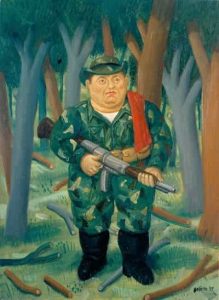
Las Fuerzas Armadas Revolucionarias de Colombia (las Farc), probably the most internationally well-known of Colombia’s guerrilla groups, were founded in 1964 by Manuel “Tirofijo” Marulanda in the south of Tolima and in Meta. Tirofijo or Sureshot was a long time Communist Party organizer who had worked in the countryside to set up self-defense forces aimed at protecting peasants from abuses by large landowners and by the government, which was trying to evict small landholders from their land so that it could be “more efficiently” used by big businesses. Following a massive attack against his “Republic of Marquetalia,” Tirofijo retreated into the hills and began organizing las Farc into guerrilla force that would eventually reach over 18,000 fighters.
El Ejercito Liberación Nacional (ELN) was founded in 1964 in Santander by Fabio Vásquez Castaño and others who had been trained in Cuba. The ELN was driven by many of the same ideas as las Farc, but it tended to draw more people from the cities, including priests interested in pursing Liberation Theology by way of armed revolution. The most famous example is Father Camilo Torres, who was killed in his first battle with the ELN and thereby became a kind of martyr that inspired others.
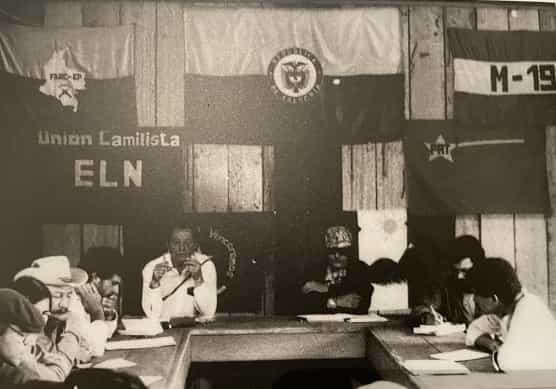
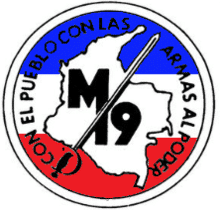
El Ejército Popular de Liberación (EPL) was created a few later in 1967 in Antioquia by an offshoot of Colombia’s Community Party more aligned with Maoist Marxism. Like las Farc, it sought to cultivate a rural base but it made more of a point of attacking urban centers. Many of its leaders were killed in the 70s and it was never able to attract as many follows as the other groups.
El Movimiento 19 de Abril (M-19) arose out of the 1970 presidential elections in which former military dictator Gustavo Rojas Pinilla was allegedly robbed of his victory. On the evening of April 19th, with Rojas Pinilla in the lead, live election coverage was abruptly interrupted. When Colombians awoke the next day, Misael Pastrana’s slim victory was being broadcast. Members of M-19 claimed fraud and railed against the corrupt Colombian government. From the start it was an urban organization aimed at inspiring resistance by carrying out audacious, very public acts. This included stealing Simón Bolívar’s sword, executing a prominent union leader they accused of collaborating with the CIA, tunneling under a military base to steal 5,000 weapons, taking over the Dominican Republic’s embassy during a party that included ambassadors from the US and 16 other countries, and more.
The history of these guerrilla movements is complex, intertwined, and divisive. Arising as they did in order to confront an indisputably unjust set of circumstances, many started with some level of public sympathy. Public support, however, often curdled into suspicion and hatred over years of killings, kidnappings, extortion, and participation in the drug trade.
Los Narcotraficantes
Drug traffickers took advantage of chaos in the countryside to grow marijuana and develop routes to the United States. By the early 70s the drug trade, the vast majority of which was still marijuana, was worth $1.6 billion and accounted for one third of Colombia’s export value.
Over time cocaine grew in importance. Once it was clear that there was strong demand for the powder in the US, it was a simple matter of economics, with cocaine orders of magnitude more profitable per kilo than marijuana. Nascent cartels in Cali and Medellín leveraged and expanded the marijuana infrastructure. Eventually the drug leaders brought segments of guerrilla movements into their orbits by funding their organizations in return for guerrilla protection of their labs, smuggling their products, and even growing cocaine leaves. When guerrillas were not sufficiently malleable, cartels bankrolled the expansion of para-militias willing to make war with the guerrillas and collaborate in drug trafficking.
Cartel leaders, euphemistically referred to the “clase emergente,” grew ridiculously wealthy. At one point, Pablo Esobar was put on Forbes’ list of wealthiest people, with an estimated net worth of around $55 billion. This fortune was built by exporting 80 tons of cocaine each month and by murdering 46,000 people in Medellín alone. His famous slogan of “plata or plomo,” silver or lead, had made “life cheap and murder lucrative” (Davis, 139).
A War on Drugs
The combination of brutal force and functionally limitless money allowed the influence of los narcotraficantes to spread into nearly every facet of life in Colombia. Cartel leaders began to buy up everything in the country from hotels to soccer teams to congresspeople to priests to guerrillas to paramilitaries. For a variety of reasons, including stacks of money and tunnel vision on brutally suppressing leftist movements, the Colombian government did little to counter the growing Narcoracia.
Eventually, however, the government did respond. In 1984 they raided an enormous, multi-laboratory cocaine processing complex named Tranquilandia that was tucked away in the jungles of Caquetá. The Medellín Cartel responded swiftly and savagely to the loss. A month after the raid, the Minister of Justice, Rodrigo Lara Bonilla was assassinated in the streets of Bogotá. At the end of 1986, Colonel Jaime Ramírez Gómez, a leader in the raid against Tranquilandia, was murdered using an RPG and automatic weapons. The following month, Guillermo Cano, owner and editor of El Espectador, was killed for his fearless critiques of drug traffickers and their influence on Colombian politicians.
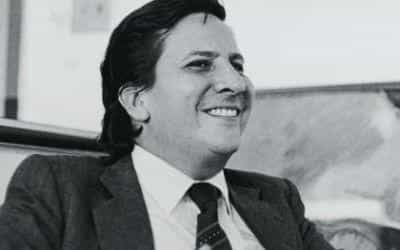
Amid this chaos, in 1985, around 30 M-19 guerrillas stormed the Palace of Justice, taking over 300 hostages. They claimed to want to bring the president into the palace to be tried before the Supreme Court. Many claim that they were funded by Pablo Escobar, who supposedly wanted them to burn documents that could lead to his prosecution and extradition to the US. Others claim there was military collusion. What is certain is that the military responded aggressively and recklessly, literally ramming a tank into building’s doors. At least 100 people died in the assault, including 11 Supreme Court magistrates. Eleven other people disappeared, burned to an unrecognizable degree in the fires or swept away by the army to be tortured and killed. This tragedy is symbolic of the broader government efforts to suppress guerrilla movements and drug trafficking.
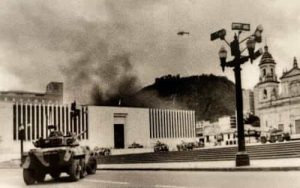
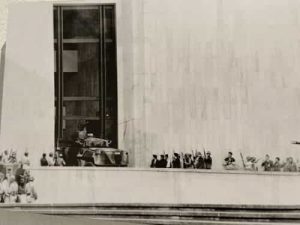
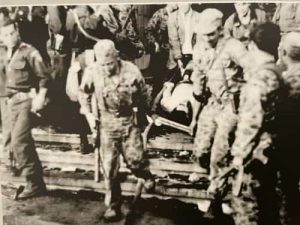
Then, in 1989, with the presidential campaign in full swing and with increasingly serious talks of a new constitution and of extraditing cartel leaders to the US, Pablo Escobar launched his most visible offensive yet. Three presidential candidates were assassinated and a commercial airplane was blown out of the sky in an attempt to kill a fourth. The government bowed to cartel pressure and officially abolished extradition in the new constitution. Soon thereafter, Escobar submitted himself to “justice” which included living at la Catedral, a jail he built and staffed with his own people. When the government tried to intervene after Escobar murdered two associates at the jail, he simply left. Sixteen months later he was killed by the Search Bloc, a special unit of the National Police.
Fractured Violence
The end of Escobar and the busting of other cartels did not bring peace. Instead, more regional drug lords began waging an even more brutal war against one another from control of the lucrative cocaine trade. Guerrillas and paramilitaries, which had proliferated enormously under Escobar’s patronage, also entered the fray, hoping to gain control of drug routes that could finance their militarized campaigns against the state and each other.
The statistics are hardly comprehensible. In some towns as small as 27,000, there was at least one murder every single day of the year. That’s proportionally equivalent to 300 murders every day in New York City. It’s a death rate 10 times what the US experienced in the first year of the COVID-19 pandemic. Furthermore, as Wade Davis writes, “from 1996 to 2000, a kidnapping occurred in Colombia every three hours of every day… By 2012 nearly five million Colombians had abandoned their country… within Colombia, those displaced by the conflict numbered more than 7 million” (xvi). Narratives of ruthless massacres in small villages carried out by guerrillas, paras, and police forces are even harder to read and understand.
More aggressive attacks on cartels did not, however, preclude drug money from influencing politics and politicians. Conspiracy theories of collusion with cartels abound. It’s tough to untangle the thick knot of accusations. Did military officials team up with paras to steal land from impoverished peasants? Did they want it to secure drug routes? Who controlled the drug trade in different parts of the country? Politicians, paras, guerrillas, politicians, some shifting combination? How many politicians did drug cartels buy? How many did paras buy? At one point a para leader claimed to have 30-50% of congress on its bankroll.
Ernest Samper, president from 1994-1998, somehow ended up receiving $2 million in his campaign accounts. He claimed this flood of money entered his account “behind his back,” an alibi that is not really taken seriously (Biblioteca Nacional de Colombia). Whatever the truth may be, we can take this as a sign that drug money was likely influencing the highest echelons of Colombia’s government, even as the War on Drugs entered its most brutal phases. It’s also likely that, as many Colombians will casually claim, narco dollars still exert a corrupting influence across the government and other sectors of society.
“Mano firme, corazón grande”
Firm hand, big heart. That was the motto of Álvaro Uribe Vélez, who served as president from 2002 to 2010. As governor of Antioquia, he had supported groups of Convivirs, armed civilian organizations that evolved into paramilitary groups. As president, he continued to pursue a strategy of fighting terror with even more terror, supporting paras against drug lords and guerrilla forces. With $4 billion from the United States as part of Plan Colombia, Uribe expanded the military and the police and intensified the war against guerrilla forces.
For the first time in years, las Farc were pushed back. Violence throughout the country also seemed to decline. Medellín, for instance, had had 187 murders per 100,000 inhabitants in 2002, which fell to 28.7 by 2008 (Sánchez-Moreno). While many disagreed with his tactics, many more supported him fiercely and were willing to ignore or reason away his brutal tactics.
Uribe is still a powerful and divisive figure in Colombia and I do not know nearly enough to give a competent analysis. Here are some bullet points of what I can piece together:
- He was defintely more sympathetic to right wing paras than to left wing guerrillas.
- During his presidency, 1000s of innocent civilians were killed and presented as defeated guerrillas in a scandal known a the “falsos positivos.”
- Reputable news sources claim that paras helped Uribe win his elections by tampering with the vote in areas they controlled (Sánchez-Moreno).
- There are also accusations that Uribe used the country’s intelligence agency to spy on political opponents and critics (Sánchez-Moreno).
- Uribe and his allies have been accused of collaborating in countless massacres aimed at causing people to flee in order to steal their land (Sánchez-Moreno).
- Though Uribe has not been convicted of a crime, by 2018 60 members of Colombia’s Congress had been convicted, most from Uribe’s coalition. As one critic said, you can’t swim in the pool and not get wet (Sánchez-Moreno).
- Under the Ley de Justicia y Paz – 30,000 paramilitary members supposedly demobilized, even though there were only an estimated 18,000 in the country. In their testimonies, they collectively acknowledged more than 37,000 murders, but only 47 were ever charged with a crime (Sánchez-Moreno).
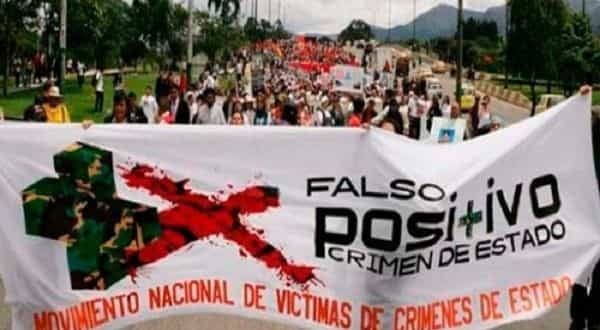
My sense from talking with various Colombians is that Uribe has in general fallen out of favor in the realm of public opinion. He does, however, still wield an enormous amount of power in the country. The current president, for instance, is widely seen as an Uribista. Moreover, given the country’s very recent history of violence, it’s a sensitive topic to discuss, especially for a foreigner. It’s possible, even probable, that a conversation about these topics might involve someone who lost a friend or family member to guerrilla violence or paramilitary violence or government violence. Most, however, see hope for the future of Colombia.
A New Constitution
For the first time, in 1991, an constitutional assembly gathered that was not the result of a war. Representatives from across the political spectrum gathered to draft a new governmental blueprint for the country. At 380 articles and 60 other additions, they produced the longest in the world (Bibloteca Nacional de Colombia). Among other things, the Constitution of 1991 decentralized the government, reformed the judicial system, and abolished extradition. Around 30% of Colombia’s lands, a total acreage roughly equal in size to the UK, was formally recognized as resguardo territories – lands belonging to the country’s 80+ indigenous nations and their 2 million members (Davis). Overall, the new constitution was seen as a positive step forward.
The Washington Consensus
The first president under the new constitution, César Gaviria, is also known as the father of Colombian neoliberalism. His overall policies were an attempt to conform to the Washington Consensus that developed between the World Bank, the International Monetary Fund, and the US Treasury Department. President Gaviria therefore worked to reduce the size of the government, deregulate businesses, support privatization, and surrender to the supposed wisdom of free markets. Treaties with the US and EU eliminated protective barriers, exposing Colombian businesses to global market forces.
The unfortunate result was a kind of neocolonialism. Many sectors of the economy declined. Though it has once exported a range of agricultural products, the low prices of foods from Africa and Asia hollowed out many businesses and pushed the country into the position of a net importer. Gradually, as had been the case during colonial times, Colombia once again became an exporter of its natural resources to rich countries. Oil is currently worth more than 50% of Colombia’s export market (Davis). Despite these troubling trends, the economy has grown relatively reliably, if unequally, over the last few decades.
A more peaceful future
Though President Uribe offered peace and a path to amnesty for paramilitia forces, he took a vehemently hardline against any such deals with the guerrillas. This changed somewhat unexpectedly when his former defense minister and close ally, Juan Manuel Santos, became president in 2010. Santos broke with Uribe and began pursing peace talks with las Farc almost immediately.
In 2016, a peace and amnesty agreement was put to a national referendum. Uribe used his platform and power to campaign against the treaty, arguing that the terms were too lenient and that the guerrillas could not be trusted. The public very narrowly agreed with Uribe and the agreement was rejected. After some light edits, the Peace Accords were passed through Congress instead of by referendum and became law towards the end of 2016.
Since then, thousands of guerrillas have demobilized and the country has, in general, remained relatively peaceful. Some dissident factions continue to pursue violent strategies of resistance and I get the sense that the situation has deteriorated in some areas, especially with the pressure brought by the pandemic. But overall, Colombians seem to be cautiously optimistic and ready to stand up for the future they hope to co-create.
The Making of Modern Colombia: A Nation in Spite of Itself by David Bushnell
Magdalena: River of Dreams by Wade Davis
Between Legitimacy and Violence by Marco Palacios
There Are No Dead Here: A Story of Murder and Denial in Colombia by Maria McFarland Sánchez-Moreno
Various articles.
Note: All views expressed are my own, they do not represent the Fulbright or any other organization.
